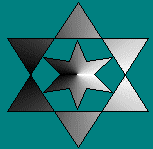Ciências Afins

Gnose (conhecimento)
Ciências Afins
|
Gnose (conhecimento) |
Index - Nag Hammadi Codexes.
Codex I.
1.The Prayer of the Apostle Paul.
2.The Apocryphon of James.
3.The Gospel of Truth.
4.The Treatise on the Ressurrection.
5.The Triparite Tractate.
II.
1.The Apocryphon of John.
2.The Gospel of Thomas.
3.The Gospel of Philip.
4.The Hypostasis of the Archons.
5.On the Origin of the world.
6. The Exegesis on the soul.
7.The Book of Thomas the contender.
III.
1.The Apocryphon of John.
2. The Gospel of the Egyptians.
3.Eugnostos the Blessed.
4.The Sophia of Jesus Christ.
5. The Dialogue of the Saviour.
IV.
1.The Apocryphon of John.
2. The Gospel of the Egyptians.
V.
1.Eugnostos the Blessed.
2.The Apocalypse of Paul.
3.The first apocalypse of James.
4.The second apocalypse of James.
5.The Apocalypse of Adam.
VI.
1.The Acts of Peter and the twelve apostles.
2.Thunder, Perfect mind.
3.Authoritative Teaching.
4.Concept of our great Power.
5.Plato`s Republic 588a-589b.
6.Discourse on the eight and the ninth.
7.The Prayer of thanksgiving.
7a. Scribal Note.
8. Asclepius 21-29.
VII.
1.The Paraphrase of Shem.
2.The Second treatise of the Great Seth.
3.The Apocalypse of Peter.
4.The Teachings of Silvanus.
5.The Three Steles of Seth.
VIII.
1.Zostrianos.
2.The Letter of Peter to Philip.
IX.
1.Melchizedek
2.The Thought of Norea.
3.The Testimony of Truth.
X.
1.Marsanes.
XI.
1.The Interpretation of Knowledge.
2.An Valentinian Exposition.
2a.On the Anointing..
2b.On the Baptism A.
2c.On the Baptism B.
2d.On the Eucharist A.
2e. On the Eucharist B.
3.Allogenes.
4.Hypsiphrone.
XII.
1.The Sentences of the Sextus.
2.The Gospel of Truth.
3.Fragments
XIII.
1.Trimorphic Protennoia.
2.On the Origin of the world.
NAG HAMMADI - Pequena localidade no Alto Egito, onde em 1945, o camponês
Muhamad Ali as-Salmman, encontrou um grande pote vermelho de cerâmica, contendo treze livros
de papiro encadernados em couro. No total descobriram cinquenta e dois textos naquele sítio.
Na primeira análise, para surpresa do Dr. Quispel, a primeira linha traduzida do copta foi: "Essas
são as palavras secretas que Jesus, O Vivo, proferiu, e que seu gêmeo, Judas Tomé, anotou".
Os manuscritos, hoje conhecidos como Evangelhos Gnósticos, ou Apócrifos (Apocryphom
literalmente livro secreto), revelam ensinamentos, apresentados segundo perpectivas bastante
diversas daquelas dos Evagelhos Oficiais da Igreja Romana; como por exemplo este trecho
atribuído a Jesus, O Vivo: "Se manifestarem aquilo que têm em sí, isso que manifestarem os
salvará. Se não manisfestarem o que têm em sí, isso que não manifestarem os destruirá."
Além dos Evangelhos (ensinamentos atribuídos a Jeus Cristo através de seus apóstolos) outros
textos compõe o legado de Nag Hammadi, de cunho teológico e filosófico.
Os papiros encontrados em Nag Hammadi, tinham cerca de 1.500 anos, e eram traduções em
copta de manuscritos ainda mais antigos feitos em grego e na língua do Novo Testamento, como
constatou-se, ao verificar que parte destes manuscritos tinham sido encontrados em outros locais,
como por exemplo alguns fragmentos do chamado Evangelho de Tomé. As datas dos textos
originais estão estimadas entre os anos 50 e 180, pois em 180, Irineu o bispo ortodoxo de Lyon,
declarou que os hereges "dizem possuir mais evangelhos do que os que realmente existem".
Acredita-se que os manuscritos foram enterrados por volta do século IV, quando na época da
conversão do imperador Constantino, os bispos cristãos, passaram ao poder e desencadearam
uma campanha contra as heresias. Então, algum monge do mosteiro de São Pacômio, nas
cercanias de Nag Hammadi, tomou os livros proibidos e os escondeu no pote de barro, onde
permaneceram enterrados por 1.600 anos !